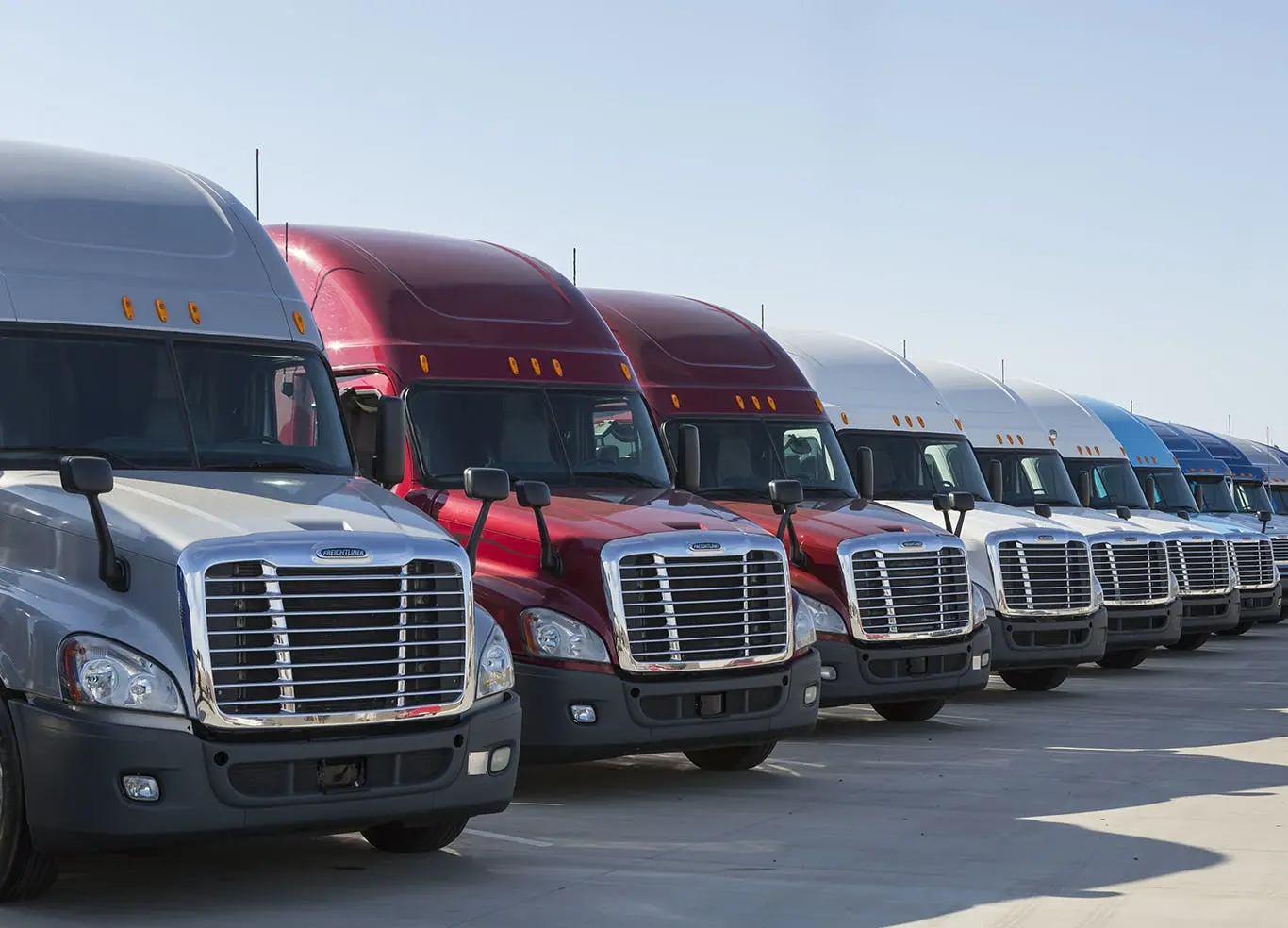

Essential Tools and Technologies for Modern Trucking
Trucking conferences showcase a vast range of add-ons for fleets to enhance their trucks. Innovative companies offer credible trucking technology and devices that integrate hardware and software, providing advantages in fleet and trucking operations. The technology aims to make the industry more efficient, safer, and competitive. Fleet investment decisions revolve around the question of whether it enhances competitiveness. We focus on key add-ons beyond basic fleet management/telematics products, such as dynamic routing software, camera systems, driver scorecards, collision mitigation tech, logging devices, trailer tracking, and temperature monitoring. Implementing the driver safety system requires careful consideration due to costs, time, and the need for a clear return on investment.
- 1. Dynamic Routing
- 2. Forward-looking Camera Systems
- 3. Driver Scorecards
- 4. Collision Mitigation Technology
- 5. Electronic Logging Devices
- 6. Trailer Tracking
- 7. Temperature Tracking/Record Keeping
1. Dynamic Routing
In trucking and fleet operations, the route you choose is crucial for efficient delivery and cost savings. Dynamic routing software provides adjustability and real-time data, incorporating traffic and weather information to find the most optimal paths. It helps trim unnecessary miles, avoid traffic congestion or accidents, and even increase route density. This intelligent software automatically optimizes routes, saving time and reducing fuel consumption—major cost factors for fleets. Implementing dynamic routing improves trip planning, driver utilization, cost control, customer satisfaction, and overall business reputation.
2. Forward-looking Camera Systems
In-cab camera systems, commonly known as “dash cams,” have improved significantly over the years and now known as the best semi truck camera system. They have benefited from advancements in digital camera technology, such as better image processing, low light/nighttime usability, and high-definition image capture. The primary reason fleets install video systems in their trucks is to protect themselves and their drivers from collisions and fraudulent insurance claims. People seeking financial gain may file false claims or deliberately collide with trucks, targeting fleets as lucrative victims. Another risk for trucks on the road is public perception. Studies have shown that in the majority of accidents involving heavy trucks and passenger cars, the fault lies with the passenger car driver, often exceeding 70%. However, when the public witnesses such crashes, they tend to assume the truck is at fault.
3. Driver Scorecards
Technologies are merging and complementing each other in an area known as driver “scorecarding” or “gamification.” In the late 2000s, fleet management systems used telematics data to identify problematic driving behaviors such as hard braking and acceleration. These behaviors can lead to accidents, increase maintenance costs, and reduce fuel efficiency by 20-30%. Initially, fleet managers would hold meetings with drivers to discuss their driving performance. However, driver scorecards have evolved to include more sophisticated features. Vnomics, for example, considers factors like load type, truck specifications, and transmission shifting data to provide a more accurate assessment of a driver’s fuel efficiency. Additionally, driver coaching and scoring technology now works alongside truck video systems. Netradyne’s product, for instance, incorporates artificial intelligence and 306-degree high-definition cameras to automate driver scorecarding and coaching. It can detect various driving events, such as running red lights, rolling through stop signs, and speeding. These advancements allow for real-time monitoring and analysis, reducing the burden on fleet managers and promoting a fairer, more comprehensive approach to driver scoring and coaching.
4. Collision Mitigation Technology
Research reveals that heavy trucks are disproportionately involved in collisions and fatalities. The Federal Motor Carrier Safety Administration recently found that although heavy trucks and buses make up only 4% of registered vehicles and 9% of total miles driven, they account for 13% of accidents and traffic fatalities. This is primarily due to their larger size and weight, which can cause severe damage to smaller vehicles. Despite data showing that passenger vehicle drivers are often at fault in collisions with heavy trucks, any collision with a heavy truck can lead to costly insurance claims and lawsuits. It is essential for public safety and fleet profitability to minimize avoidable collisions. This is particularly crucial for fleets transporting hazardous materials, as crashes can result in extensive damage and expensive cleanup. Advanced collision mitigation systems are incorporating more sensing technology to monitor and prevent various types of crashes. These systems are reducing false positives compared to earlier products. Collision mitigation systems are now standard in many new trucks and can also be retrofitted to older ones.
5. Electronic Logging Devices
Starting December 18, nearly all U.S. interstate commercial trucking operations will be required to use electronic logging devices (ELDs) to comply with regulations. Older devices known as automatic onboard recording devices (AOBRDs) are being phased out over the next two years but serve a similar purpose. What is ELDs? ELDs track and record commercial truck drivers’ hours of service (HOS) to ensure compliance with the Federal Motor Carrier Safety Administration’s requirements. While some owner-operators and small-fleet drivers have resisted electronic logs, claiming they needed to exceed HOS limits to stay competitive, others argue that ELDs will enhance competitiveness in the industry. The trucking industry often faces high driver turnover, which incurs significant costs.

6. Trailer Tracking
Trailer trucking system simplifies asset management and enhances visibility. What is GPS tracking and how does it help? It aids in loss prevention by monitoring trailers in high-theft areas and better stolen trucks tracking. The real value of trailer tracking goes beyond GPS transponders and includes data integration into fleet management systems. Enhanced visibility and utilization of trailers enable informed equipment purchasing decisions. Additionally, trailer-tracking devices help drivers locate trailers quickly, contributing to streamlined operations within the fleet management system.
7. Temperature Tracking/Record Keeping
Compliance with the Food Safety Modernization Act requires carriers to adopt technology for sanitary transportation. Temperature-tracking technology has become crucial for carriers to meet the regulations and demonstrate compliance to shippers. Refrigeration units now have built-in technology that monitors temperature and shares data with fleet management platforms. This ensures proper temperature control during food transportation, especially when dealing with different temperature requirements for various products. The technology helps maintain temperature integrity, alerts drivers to issues, and provides documentation for pickup and delivery. Temperature tracking also protects carriers from potential litigation and supports regulatory inspections. It can be a valuable marketing tool for carriers, demonstrating their commitment to food safety and compliance. Adopting this technology early can offer significant business advantages in the industry.
In addition to team driver technology and GPS tracking, the trucking industry is also benefiting from better plug tech. This technology refers to improved electrical connectors and charging systems for electric trucks. As the demand for sustainable transportation grows, more and more trucking companies are transitioning to electric vehicles. Better plug tech ensures faster and more reliable charging, minimizing downtime and enabling longer driving ranges for electric trucks.
Logity Dispatch services offer comprehensive solutions for modern trucking operations, including the essential tools and technologies discussed in this article. We provide a comprehensive suite of tools and technologies to optimize fleet operations, enhance safety, and stay ahead in the competitive trucking industry. By leveraging our solutions, fleets can drive their businesses forward, increase efficiency, and meet the evolving demands of modern trucking operations.






